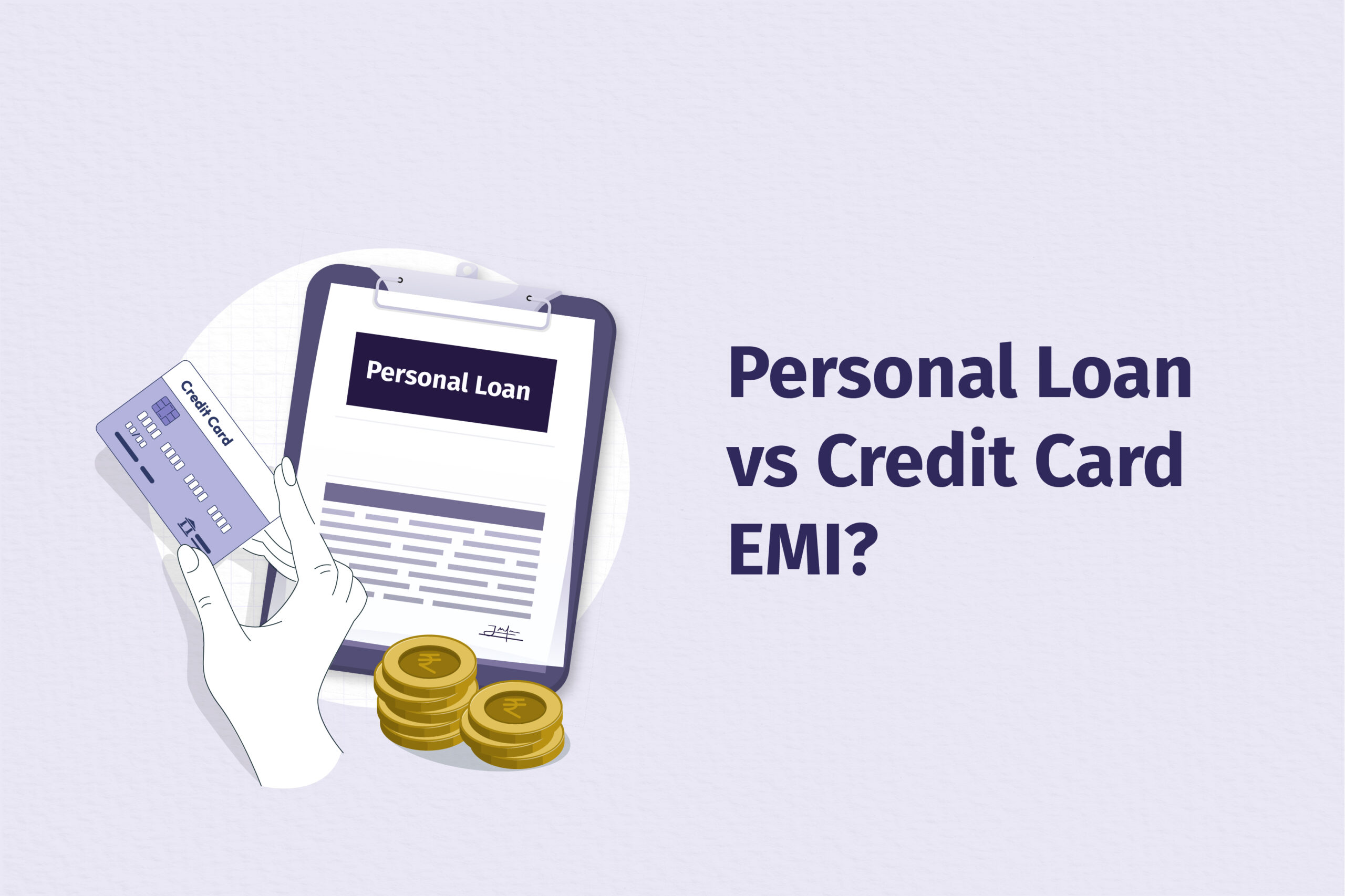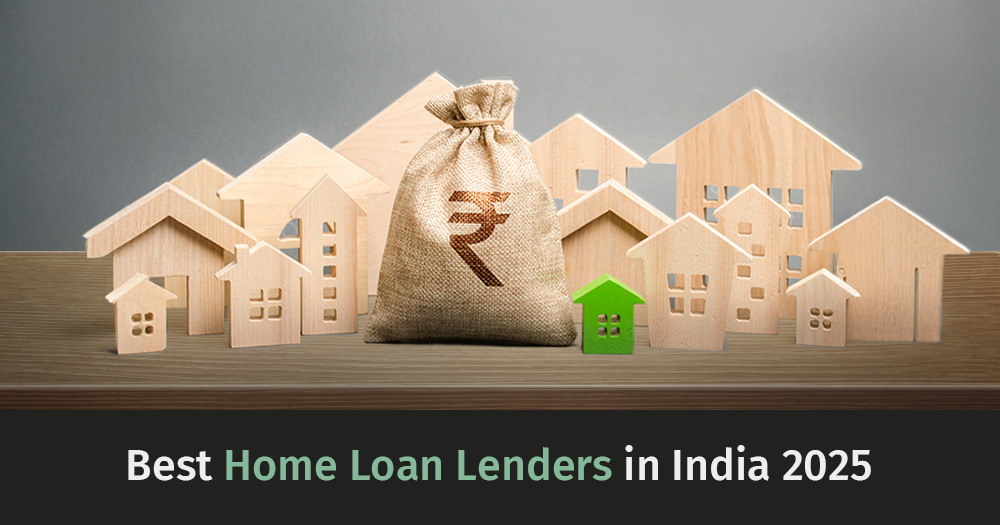When you need money for something important, like a medical emergency, home repairs, wedding, or a big purchase, you might think about taking a personal loan or using a credit card EMI. Both options let you borrow money and pay it back later in monthly parts. But they work in different ways and can cost you very differently.
A personal loan gives you a lump sum of money without needing any security or collateral. You repay it over a fixed time, usually at a lower interest rate. On the other hand, credit card EMIs let you break big purchases into smaller monthly payments, but these often come with higher interest and shorter repayment time.
This article will help you understand how both work, when to use which option, and what to check before deciding. The goal is to help you choose the smarter way to borrow, so that you avoid unnecessary costs and manage your money better.
What is a personal loan?
A personal loan is classified as an unsecured loan, which means the borrower does not need to pledge any asset, such as property, gold, or a fixed deposit, as collateral to get the loan.
Personal loans are offered by traditional lenders like banks and nontraditional sources, such as NBFCs. Personal loans allow you to use the money for any personal purpose.
When you take a personal loan, the lender disburses the entire loan amount upfront into your bank account. You then repay this amount over a fixed tenure, typically ranging from 1 to 5 years, through equated monthly installments (EMIs).
Each EMI includes:
- A portion of the principal (the original loan amount), and
- Interest charged by the lender.
The repayment schedule is fixed in advance, so you know exactly how much you owe each month and when the loan will be fully repaid.
Eligibility for a personal loan is primarily determined by three factors:
- Income – Lenders assess your monthly or annual income to ensure you can afford to repay the loan. Higher income increases your eligibility and may fetch better terms.
- Credit Score – A strong credit score (typically 750 or above) indicates responsible credit behavior, improving your chances of approval and qualifying you for lower interest rates.
- Repayment History – A consistent record of timely payments on previous loans or credit cards reflects your creditworthiness and reliability.
Interest Rates on personal loans are generally lower than credit card interest rates, which often exceed 30–40% per annum. However, personal loan rates vary based on your credit profile:
- Strong credit will result in lower interest rate
- Weak credit will result in higher interest rate or possible rejection
Before applying for a personal loan it’s important to compare offers, understand the terms, including processing fees, prepayment penalties, and interest structures, and choose a loan that aligns with your financial goals and repayment capacity.
Credit card EMI
There are several different ways credit cards are used. For instance, buying an electronic appliance, paying bills, either through online transactions or by swiping the card. In urgent situations, you might even withdraw cash.
Large credit card expenses, such as buying electronics, booking travel, or covering emergency costs—can put pressure on your monthly budget. To manage such situations, many credit card issuers offer the option to convert high-value transactions into EMIs (Equated Monthly Installments).
This allows you to repay the amount in smaller, fixed monthly payments over a predetermined tenure, typically ranging from 3 to 24 months.
While this makes repayments more manageable, the EMI facility usually comes with an added interest cost and sometimes a processing fee.
The credit card EMI feature makes high-value purchases more manageable by allowing you to spread payments over several months instead of paying the full amount upfront. This can be useful when managing cash flow or handling urgent expenses. However, it is crucial to understand the associated terms. While EMIs may seem convenient, the interest rates on credit card EMIs are often higher than those on personal loans. Additionally, issuers may levy processing fees at the time of conversion, charge foreclosure penalties if you wish to repay early, and offer limited choices in terms of repayment tenures. Without a clear understanding of these costs, the convenience of EMIs can turn into a long-term financial burden.
Personal loan vs. credit card EMI
Let’s understand both with in-depth analysis
1. Interest rates
What it means: The extra money you pay on top of the amount you borrowed. It’s like a fee the bank charges you for giving you money.
- Credit card loan: Very high interest. If you don’t pay the full bill on time, banks start charging you interest—this can be as high as 30–45% per year. Also, this interest is added every month, which means you pay interest on interest.
- Personal loan: Much lower interest, usually 10–12% per year. Also added monthly, but since the rate is lower, you pay less overall.
Personal loans cost less if you take longer to repay. Credit cards can become expensive fast if you delay payments.
2. Borrowing limit
What it means: The maximum money you can borrow.
- Credit card loan: You can only borrow up to your card’s limit. For example, if your card limit is ₹1,00,000 and you’ve used ₹40,000, you can only borrow ₹60,000 more.
- Personal loan: Based on your income and credit history, banks may give you more, sometimes ₹5–10 lakh or more.
For small quick expenses, credit cards are fine. For bigger needs, personal loans give more money.
3. Processing speed & ease
What it means: How fast and easy you can get the loan.
- Credit card loan: Very fast. If you already have a credit card, you can convert your bill into EMIs or withdraw cash instantly. No documents needed.
- Personal loan: Takes time. You have to apply, submit your salary slips or bank details, and wait for approval. It can take 1–3 days.
Credit cards are fast. Personal loans take time, but are better for serious needs.
4. Repayment flexibility
What it means: How easily you can choose how much time you get to repay the loan.
- Credit card loan: You get only short periods like 3, 6, or 12 months to repay. You can’t always choose flexible options.
- Personal loan: You can choose longer periods—12 months to 60 months (1 to 5 years). This means smaller EMIs (monthly payments).
Personal loans give you more time to repay in small amounts. Credit card EMIs are short and tight.
5. Impact on credit score
What it means: Your credit score is like a report card banks use to see how good you are at repaying loans. A high score means banks trust you.
- Credit card loan: If you pay late or carry a balance without paying in full, your score goes down.
- Personal loan: If you pay your EMIs on time, your score goes up.
Use both responsibly. Never miss payments.
6. Penalty charges
What it means: Extra fees you pay if you miss payments.
- Credit card loan: Very high penalties. If you miss paying, you may be charged ₹500 to ₹1,200 + extra interest.
- Personal loan: Lower penalties. Usually, a small fixed amount or 1–2% of EMI.
Missing credit card payments hurts more. Personal loan penalties are smaller.
7. Best use case
What it means: When should you use which one?
- Credit card loan: Good for small, urgent expenses like phone repair, emergency ticket booking, or paying a bill when money is delayed.
- Personal loan: Best for planned big expenses like wedding, education, home repairs, or hospital bills.
Credit cards are for small, short-term needs. Personal loan is for big, planned needs.
Here is a simple table for you to understand better:
| Criteria | Credit Card Loan | Personal Loan |
| Interest Rates | Higher; costly if balance is not cleared on time. | Lower; generally more affordable over time. |
| Borrowing Limit | Capped at credit card limit. | Higher limits based on income and credit profile. |
| Processing Speed & Ease | Instantly available if you have a credit card. | May require application, documentation, and approval time. |
| Repayment Flexibility | Shorter tenures with less control. | Longer tenures (up to 5 years) give monthly budget control. |
| Best Use Case | Quick, small purchases you can repay in a few months. | Big-ticket planned expenses (education, wedding, home upgrades). |
| Impact on Credit Score | Defaults or rolling over balances hurt credit score. | Timely payments improve creditworthiness. |
| Cash Flow Suitability | Helps with short-term cash crunch when funds are incoming soon. | Suitable for long-term cash flow planning and large financial goals. |
| Penalty Charges | High late payment fees, often ₹500–₹1,200 + interest; compounded monthly. | Penalty for missed EMI is lower; usually fixed or a small % of EMI. |
Which one should you opt for?
A personal loan is often a better option for long-term borrowing, primarily because it’s more cost-effective than credit card EMIs.
Personal loans typically offer lower interest rates compared to credit cards, making them a cheaper borrowing choice. They also come with flexible repayment terms, allowing you to manage monthly expenses more comfortably. In addition, personal loans offer higher borrowing limits compared to credit card EMIs, which are restricted by your credit card limit and may not cover large expenses.
Credit card EMIs are only suited for short-term needs or pre-planned purchases where repayment within a few months is feasible. But if you’re relying on them frequently or using them to cover unplanned financial gaps, it can lead to a cycle of debt.
Conclusion
While personal loans are versatile, they should still be used with caution. Borrowing more than you need or extending the tenure unnecessarily can increase the total interest outgo.
Before choosing between a personal loan and a credit card EMI, one should understand that these are considered bad debts, meaning they do not contribute to meaningful financial growth, unlike a home loan or a business loan.
It is also important to evaluate key factors such as interest rates, repayment tenure, processing fees, and prepayment conditions before making a decision.
Avoid using borrowing as your go-to solution for every financial gap. Over-reliance on credit can create long-term financial stress.
Always make borrowing decisions with a solid financial plan. These products should not be used as a substitute for proper money management.
Financial advisors recommend building an emergency fund to cover unforeseen expenses, helping you avoid situations where you might need to rely on bad loans.









